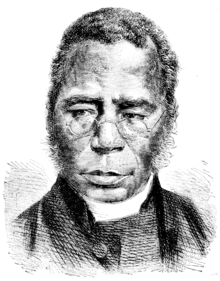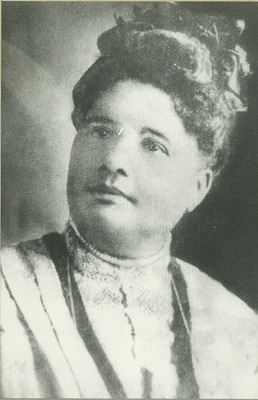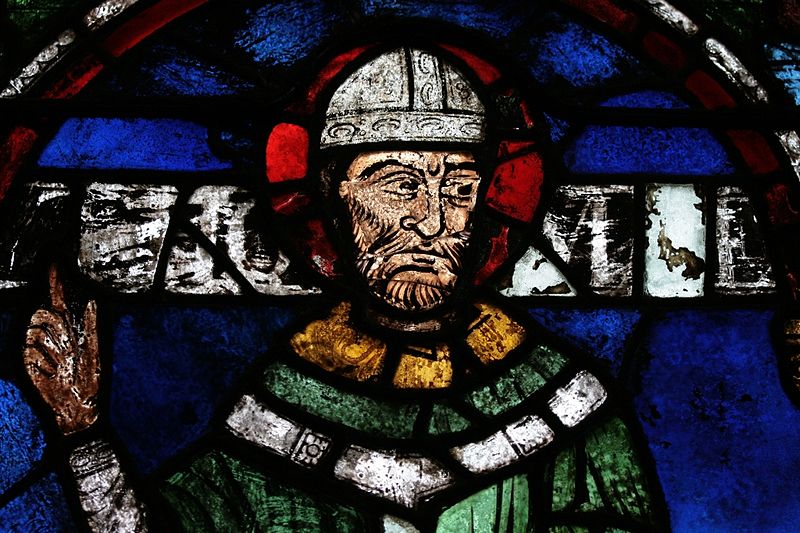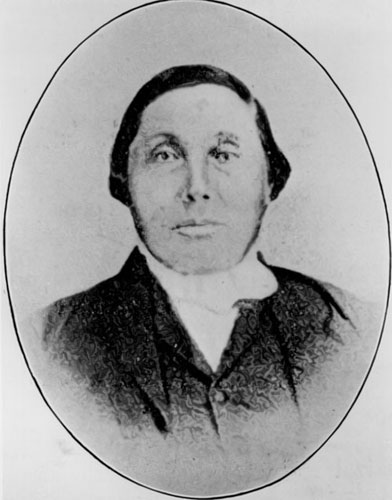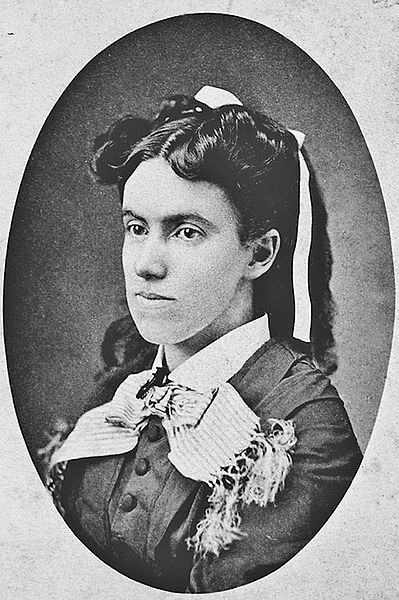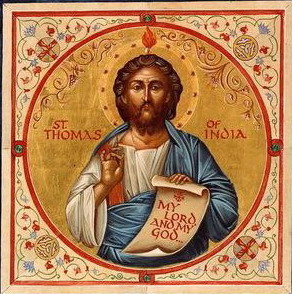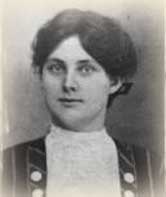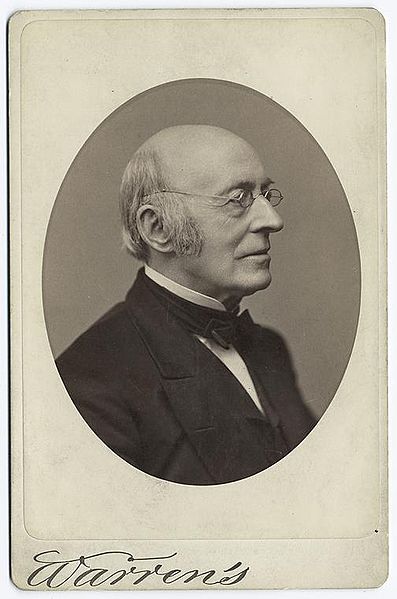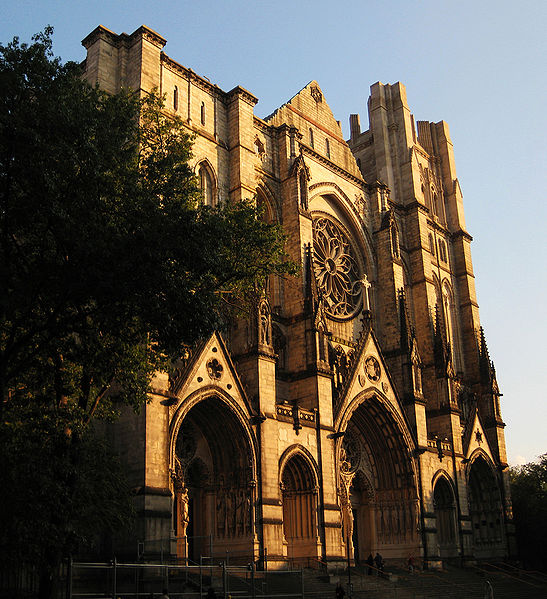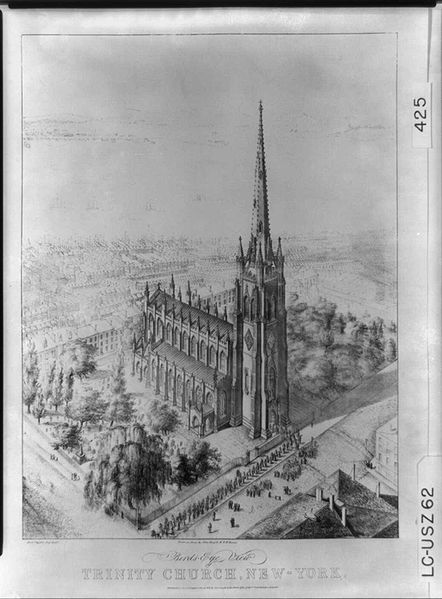Welcome to the Holy Women, Holy Men blog! We invite you to read about this commemoration, use the collect and lessons in prayer, whether individually or in corporate worship, then tell us what you think. For more information about this project, click here.
###
In Canterbury Cathedral on St. Peter’s Day, June 29, 1864, Samuel Ajayi Crowther (c. 1807 – 1891) was ordained the first African bishop in Nigeria for “the countries of Western Africa beyond the limits of the Queen’s domains.”
Crowther’s gifts to the church were many. A skilled linguist, he helped translate the Bible and Book of Common Prayer into Yoruba and other West African languages. He founded schools and training colleges, where he encouraged the study of the Gospel, traditional subjects, and farming methods that allowed students to raise basic crops and cotton as sources of income. As a child, Crowther had been captured in 1822 during a Nigerian civil war and sold to Portuguese slave traders. Intercepted by a British anti-slavery patrol, the ship and its human cargo were taken to Freetown, Sierra Leone, a haven for freed captives after the British Parliament abolished the slave trade in 1807. There Crowther was educated at a Church Missionary Society (CMS) school, was baptized in 1825, and became a teacher in Sierra Leone, an active center of African Christian ministry that sent indigenous lay and ordained ministers throughout West Africa.
Crowther’s leadership skills were soon evident, and in 1842 the CMS sent him to their Islington, England, training college. He was ordained a year later, returned to Sierra Leone, and then moved on to Yoruba territory. He also made extended mission journeys to the interior of Nigeria, where in encounters with Muslims he was known as a humble, patient listener and a thoughtful, non-polemical partner in dialogue.
At the time of his ordination as bishop, the British tried to keep missionary activity solely under the control of white British clerics, some of whom set about subverting Crowther’s authority, something he patiently endured, while actively continuing his expansive work among Africans. Despite the difficulties, Crowther’s achievement was considerable, and he has been called the most widely known African Christian of the nineteenth century. He created a solid base from which a much later generation of indigenous African leadership emerged to chart their own political and ecclesial futures.
Collects
I Almighty God, who didst rescue Samuel Ajayi Crowther from slavery, sent him to preach the Good News of Jesus Christ to his people in Nigeria, and made him the first bishop from the people of West Africa: Grant that those who follow in his steps may reap what he has sown and find abundant help for the harvest; through him who took upon himself the form of a slave that we might be free, the same Jesus Christ; who liveth and reigneth with thee and the Holy Spirit, one God, for ever and ever. Amen.
II Almighty God, you rescued Samuel Ajayi Crowther from slavery, sent him to preach the Good News of Jesus Christ to his people in Nigeria, and made him the first bishop from the people of West Africa: Grant that those who follow in his steps may reap what he has sown and find abundant help for the harvest; through him who took upon himself the form of a slave that we might be free, the same Jesus Christ; who lives and reigns with you and the Holy Spirit, one God, for ever and ever. Amen.
Lessons
Isaiah 60:4–9
Romans 8:15–23
Matthew 9:35–38
Psalm
119:57–64
Preface of Pentecost
Text from Holy, Women, Holy Men: Celebrating the Saints © 2010 by The Church Pension Fund. Used by permission.
###
We invite your reflections about this commemoration and its suitability for the official calendar and worship of The Episcopal Church. How did this person’s life witness to the Gospel? How does this person inspire us in Christian life today?
If you’d like to participate in the official online trial use survey, click here. For more information about the survey, click here.
To post a comment, your first and last name and email address are required. Your name will be published; your email address will not. The first time you post, a moderator will need to approve your submission; after that, your comments will appear instantly.
